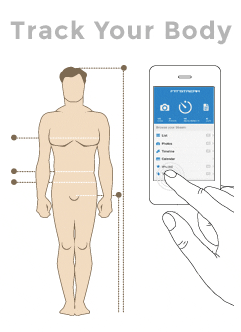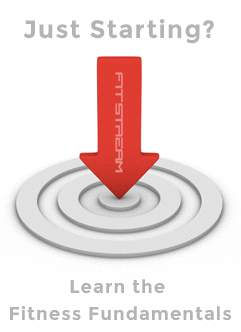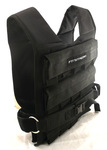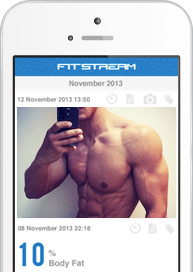Push-ups guide
The push-up (also known as a press-up) is a universal favourite body weight exercise, recognised by almost everyone.
It's a simple yet effective movement that can be used to build strength and definition in the upper-body, with particular emphasis on the chest and shoulder muscles. This is an excellent functional movement that can be performed at any time without the need for any fitness equipment.
We recommend performing the exercise on push-up bars or gymnastic rings (more advanced), which are both easier on the wrists and increase the range of motion on the exercise.
How to do push-ups
- Lie face down on the floor with hands slightly wider than shoulder width.
- Push down on the floor with the hands and raise the body up by extending the arms.
- Lower the body back down to the floor by bending at the arms and repeat.
Notes:
- Maintain a straight body throughout the exercise.
Beginning push-ups
If you struggle with the basic push-up described above there are ways to make the exercise easier to work up to a full push-up:
- Bent-knee push-up: Perform push-ups with knees bent on the floor to reduce the bodyweight involved in the exercise.
- Incline push-up: Perform push-ups with the hands elevated above the feet. The closer you are to a vertical position the easier the exercise becomes. Lower the incline as you gain strength until you are able to perform standard push-ups.
Advanced push-ups
To increase the difficulty of the push-up you can try the following:
Weighted push-ups
Adding additional weight or resistance to the push-up exercise is an effective way of adding intensity and continuing to make strength gains -
- Use of a weighted vest for push-ups
- Training partner to place weight plate on back
- Also see - resistance bands for push-ups, whilst not a weighted exercise, bands can be used to introduce added resistance to the exercise by wrapping the band over your back and holding in place with the hands.
Instability push-ups
Push-up variations
There are many variations on the basic push-up outlined below:
- Decline push-up - Performing the standard push-up with elevated feet to increase difficulty.
- Diamond push-ups - Keep the hands close together with the index fingers of both hands and the two thumbs touching one another to form a diamond shape.
- Handstand push-up: Because who needs to use their feet?
- Incline push-up - Performing the standard push-up with elevated hands to decrease difficulty.
- Raised leg push-ups - simply raise one leg from the floor during the exercise, and alternate the leg during sets.
- Ring push-up's: Using gymnastics rings to increase difficulty.
- Suspended push-up's: Using a suspension trainer to add instability to the exercise.
- T-push up: Adds additional complexity and difficulty to the standard push-up.
- Three-point push-up - Place one leg on top of another so only the one foot and two hands are in contact with the ground.
 Fitstream AppTrack your fitness progress and see the difference for yourself with our free app
Fitstream AppTrack your fitness progress and see the difference for yourself with our free app











